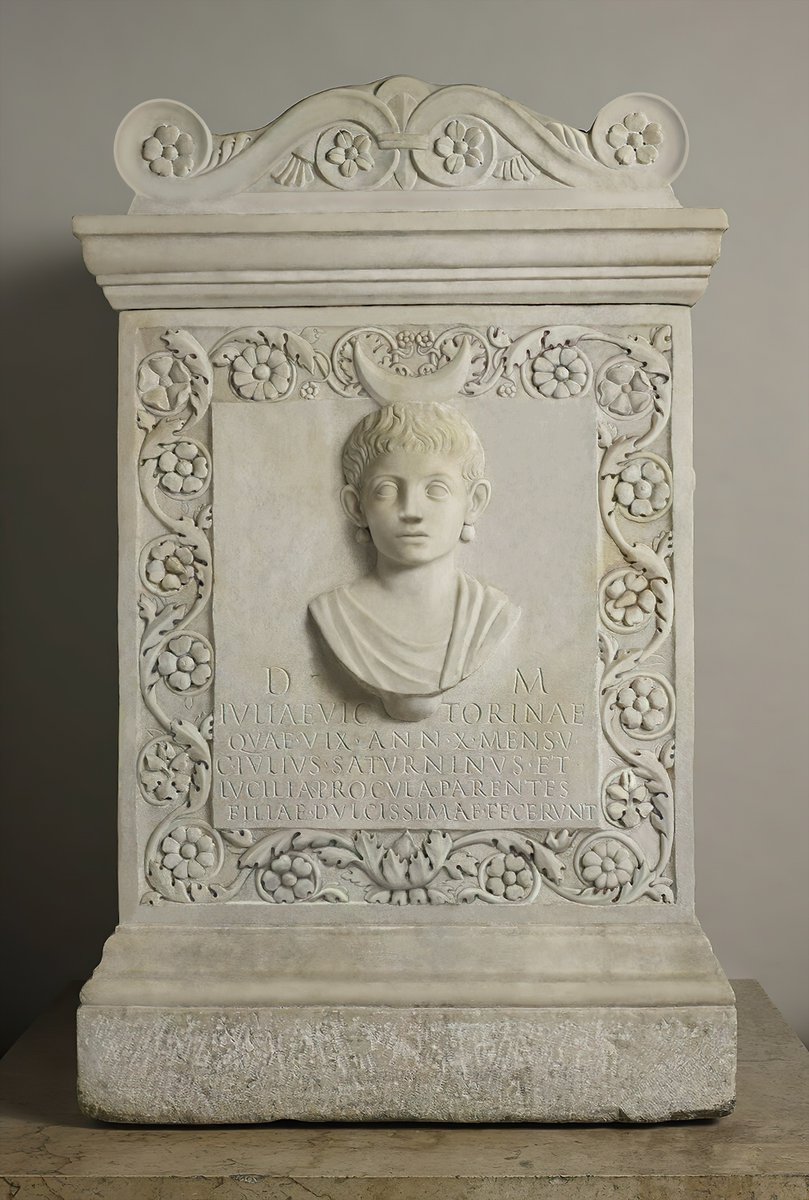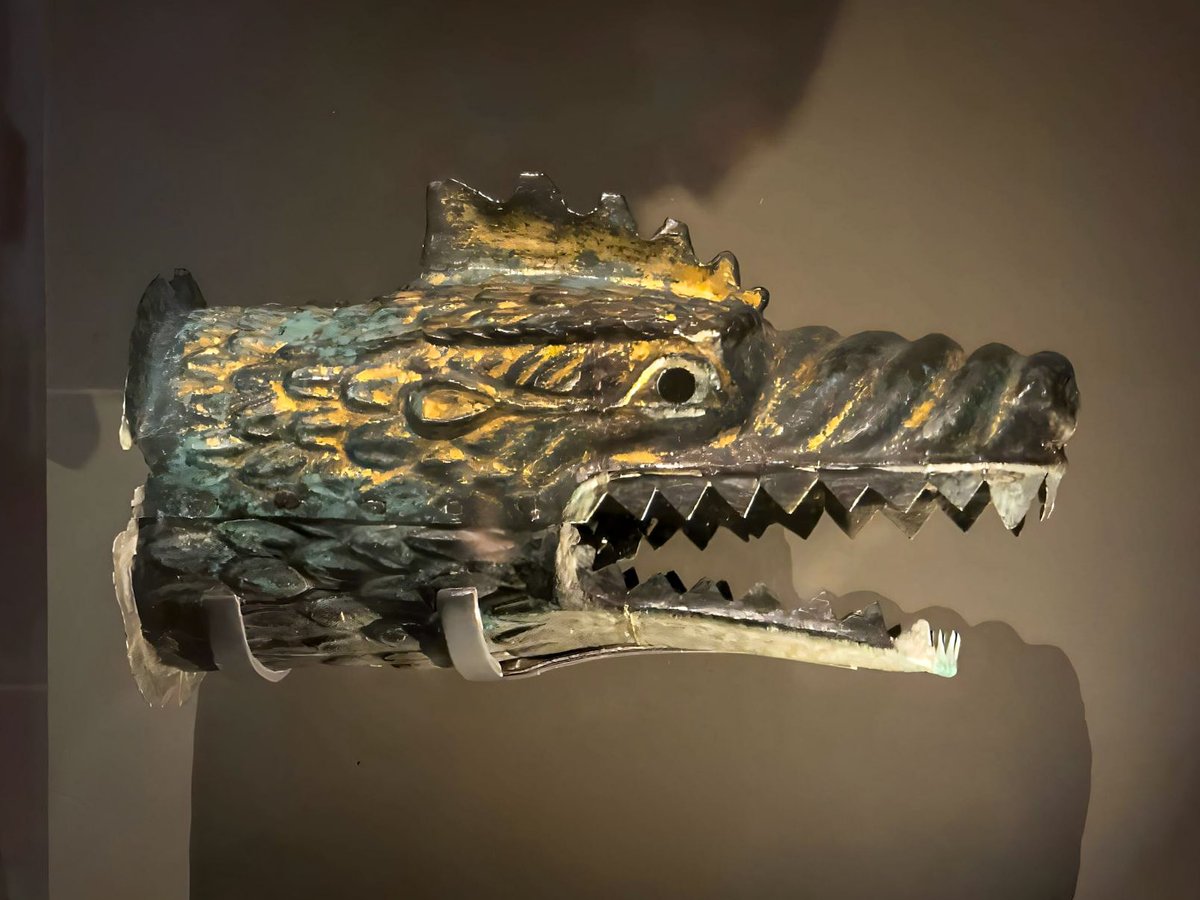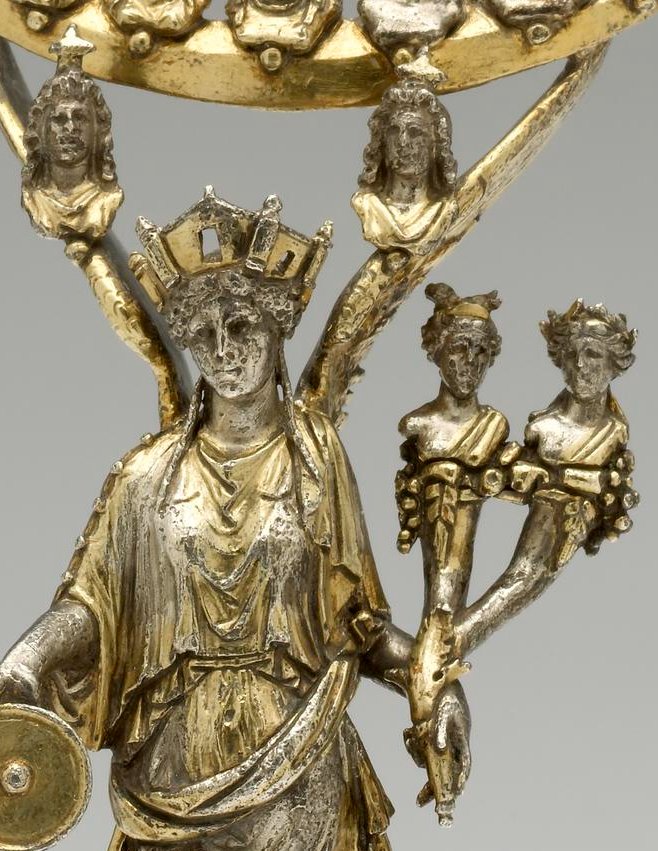Finally finished! A speculative reconstruction of the 1st c. AD funerary altar of the child Julia Victorina. Beautiful Ionic decorative scheme, with very specific spring flowers. So specific that I think they must have been individually colored. #polychromy #Louvre 1/ 



The funerary inscription is fairly standard, if not heartbreaking. Julia lived to the age of 10 years and 5 months, and is described as 'sweetest daughter'. My attempt at a translation, below. The letters get wonky on the bottom line! #epigraphy @abby_fecit @Caroline_Barron 2/ 





Julia's parents were Caius Julius Saturninus and Lucilia Procula. Julia Victorina inherited her name from her father, using the proper name of women born into the gens (family) Julia, the same ancient patrician family as Julius Caesar. 3/ 

The crescent moon over Julia's head makes her one of the 'daughters as Diana', a funerary motif popular at that time, marking her as a virgin. The crescent moon is the symbol of the virgin goddess Diana, as well as a symbol of eternity. 4/ 





Julia is wearing gold ball earrings, very popular in the Roman world in the 1st c. AD. Several pairs have been found in tombs (below, from #BritishMuseum), and we see them portrayed on some of the '#Fayum' #mummy portraits, which are contemporaneous with this altar. 5/ 







On the rear of the altar is what appears to be an idealized adult image of Julia, wearing a married woman's stola. She's wearing the same ball earrings and a radiate crown that symbolizes her apotheosis into the heavens and her immortality - a 'matrona' in death. 6/ 

Mark Griffiths, a leading British botanist, has called this altar a 'spring meadow in stone' and has identified the flowers. Starting with the red anemones, associated with the death of the youth Adonis, whose blood turned into these flowers. A symbol of a death too young. 7/ 





Stylized acanthus leaves spring from a central plant at the bottom of the frame and grow upwards into scrolls. You can compare this to so many Roman public and private reliefs, particularly the 1st c. BC Ara Pacis, below. 8/ 



The flowers within the volutes on the altar cover seem to be a type of crab apple or edible apple bloom. Just below them (and at the bottom) are daisies, perhaps corn chrysanthemums, very familiar to Roman gardeners. 9/ 







Next to the daisies at the top are easily-identified roses, very similar to the variety known as eglantine. Eglantine roses were frequently used in this type of setting, and continued to be used into the Renaissance and beyond (looks a *lot* like a Tudor rose!) 10/ 



Rather more difficult to identify are the ones on either side that could either be large orchid flowers or, more likely, wild violets, which is what Mark Griffiths prefers. 11/ 





Finally, there's an odd pair of flowers in the middle, with poppy-like petals, but a cone-shaped middle. This may be one of those fantasy, 're-flowering flowers' seen on the Ara Pacis and elsewhere. They may symbolize everlasting life, always blooming. 12/ 





A difficult project that required my starting over *twice*, due to a bad AI enlargement. I was so taken with the spring flowers, and wanted to give Julia Victorina back the face that her parents loved so dearly. Hope you enjoy it! #polychromy 13/ 

Oh, and there's this somewhat throwaway image. I was trying to imagine the altar being used to sacrifice on Julia's behalf. On a brazier on the top ... but maybe not inside a tomb? Where was the altar kept? Outside, inside? How did it remain so pristine (the back, at least)? 14/ 





And of course I added the wrong image to the original post. It was supposed to be the photo of the altar as it is now, in the Louvre. Note how much more preserved the reverse side is. The sides of the altar have gorgeous laurel trees, sacred to Apollo. 15/ 







Thank you to everyone who liked this reconstruction. It made all of the work worth it, knowing so many loved Julia's story (and face, and flowers). If anyone wants to see my earlier reconstructions, you can find some of them on my Instagram account. instagram.com/chapps/
• • •
Missing some Tweet in this thread? You can try to
force a refresh
































